As often as I can, I like to walk from my house to Pink Lake and back; my usual route is about 12kms long, and I love every inch of it as much as I love my library and my guitars. Here are some photos, and some thoughts that came to me as I made the circuit for the first time this year. All these photos were taken today. 🙂
About half of my usual route follows a bike trail in the park, where the view along both sides is forest and rocky ridges, like this:
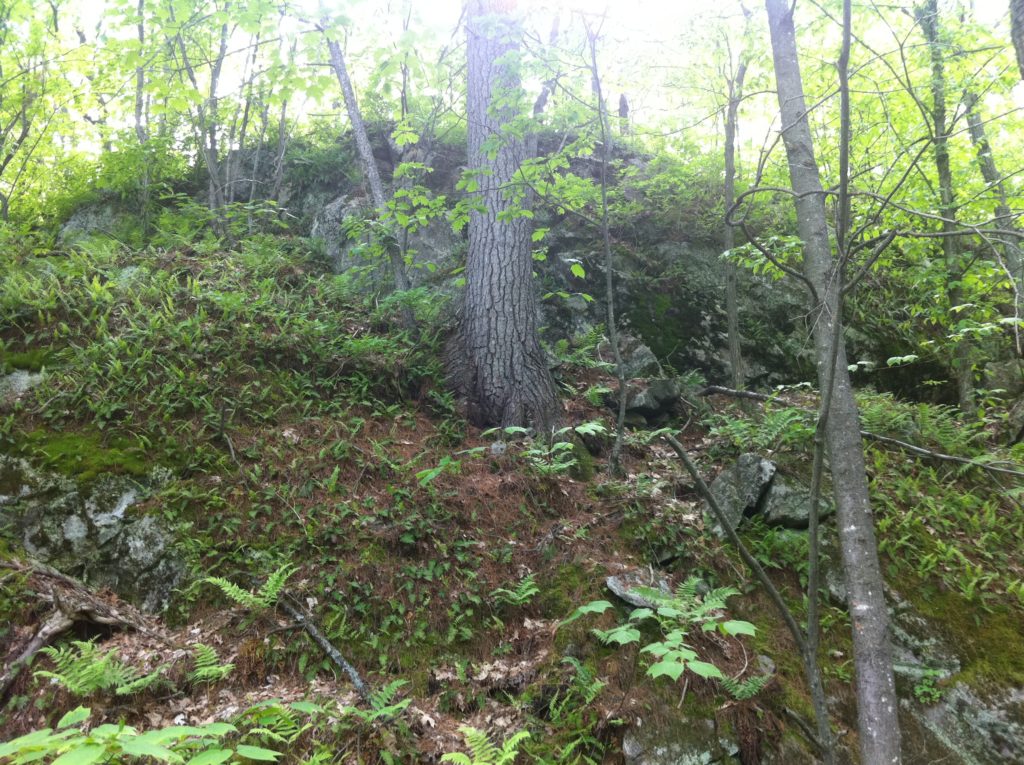
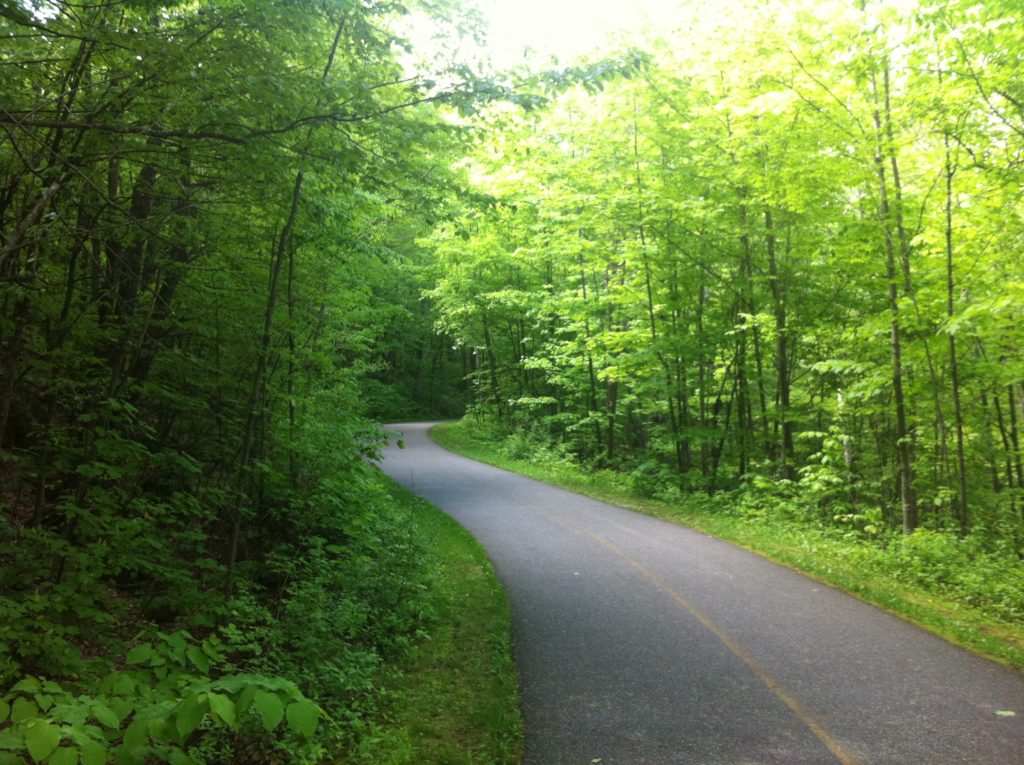
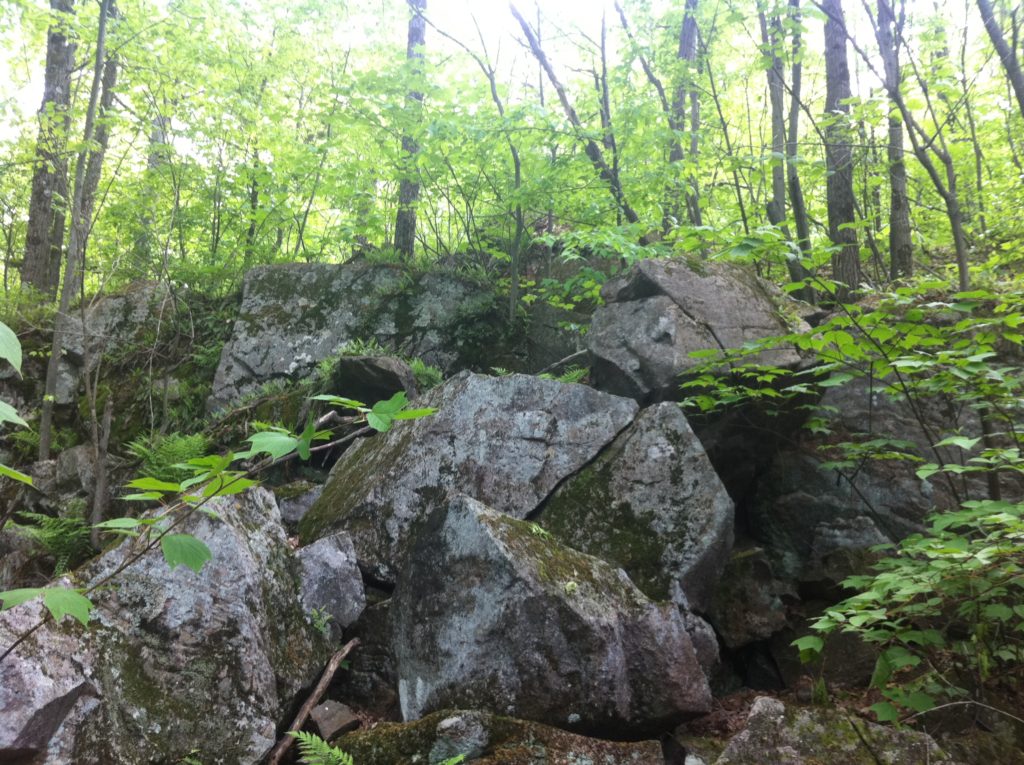
And in my private mythology, some of these rock ridges have magical names. Here below, for instance, is “The rock of ages”, a boulder by the side of the path which I like to tap with my hand as I pass by:
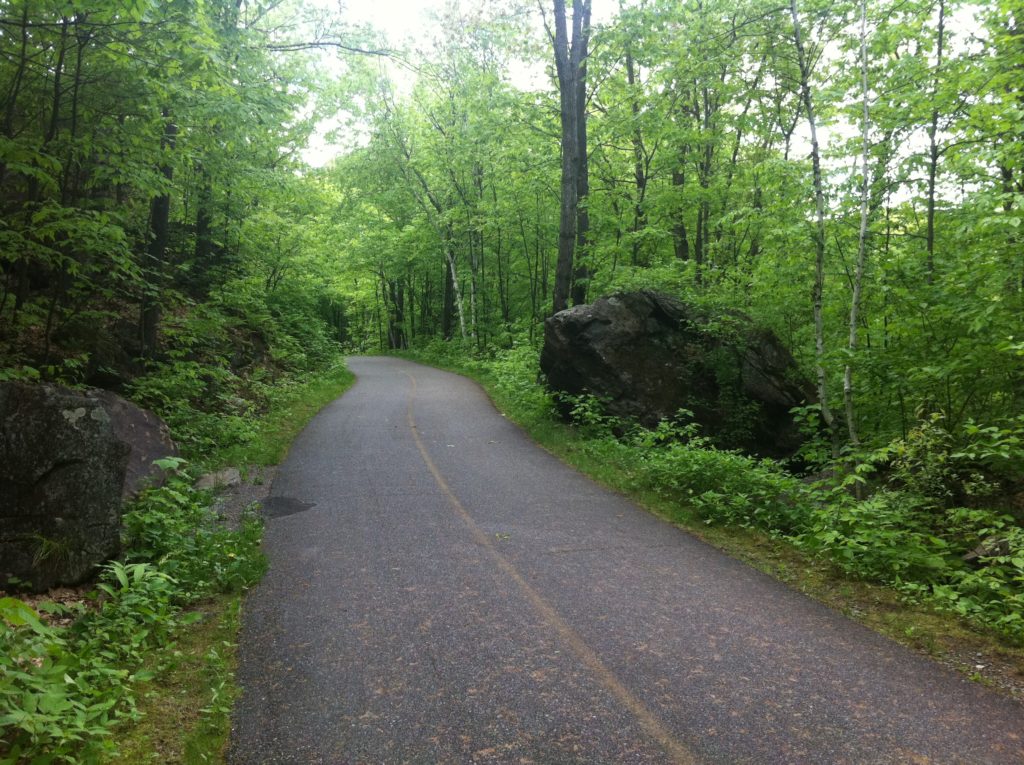
And here are two of the three rock piles which I call “The three brothers”:
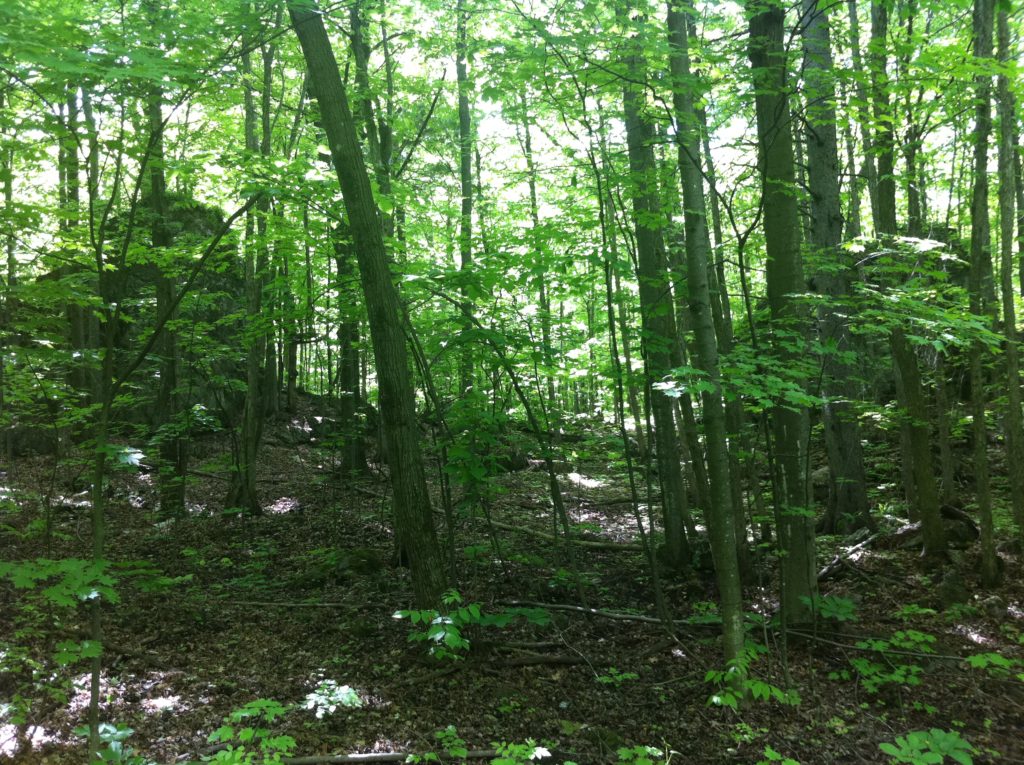
And across the bike path from the three brothers is a fourth rock pile, which I like to call “the motherstone”
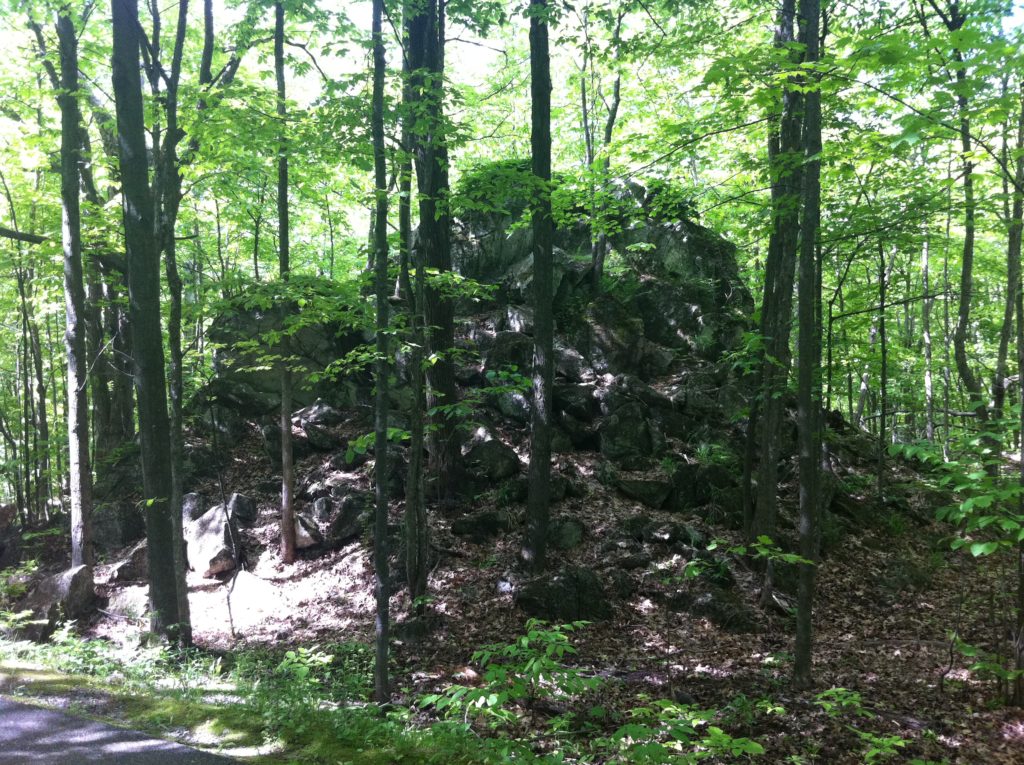
The trail also offers some variety in its tree life. For instance, this gravel path leads to a birch and juniper grove: 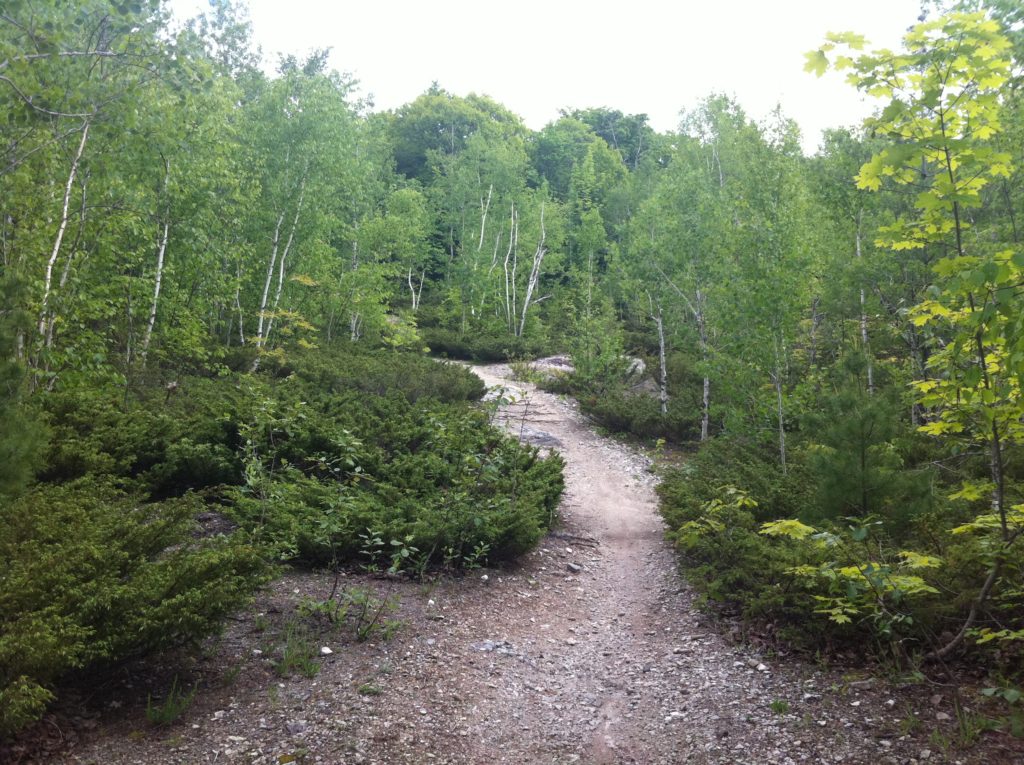
I love the intimacy of the forest. Especially in the spring, when after a few hours my skin will be slightly slick with the tree oils in the air. I love the peeping toads and frogs in the ponds, and play of sunlight through the canopy, and the sense that everything around me is connected. Yet in the last few years I have begun to love tall-grass meadows, and I wonder if I like the meadows more. Open distances, stronger breezes, a full sky above! And often, more variety in flowers. Here, for instance, is an area which I call “Colovia” (after a region in Cyrodil, because when I first came here I was playing TES:IV all the time), which appears after a dramatic bend in the path:
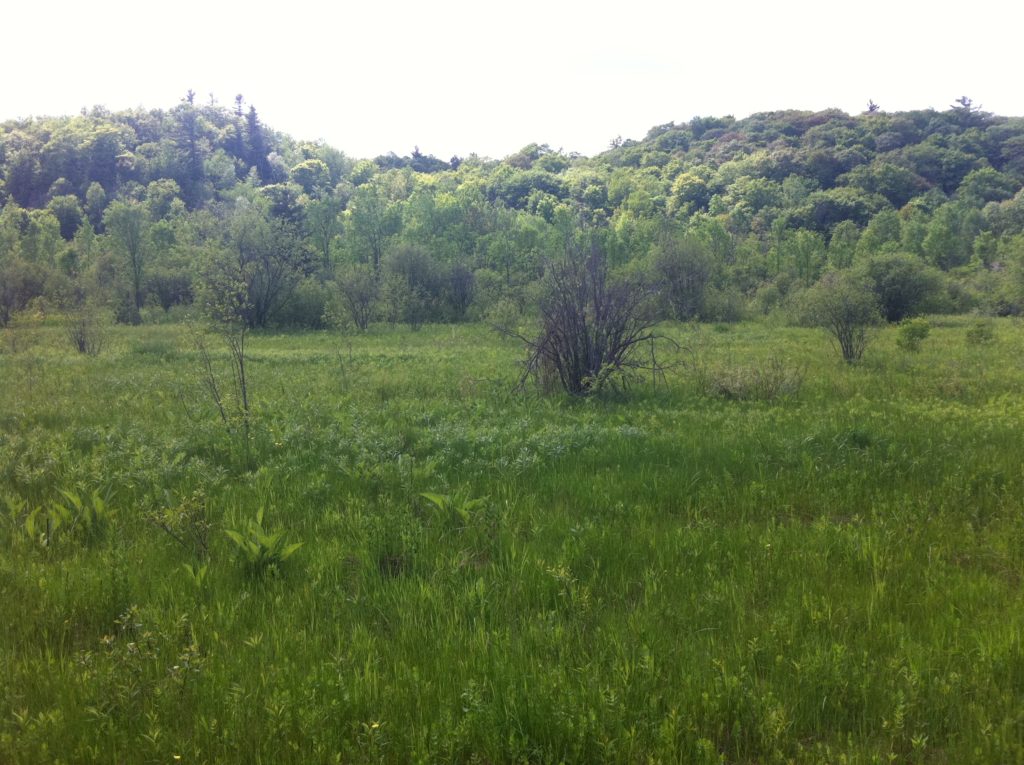
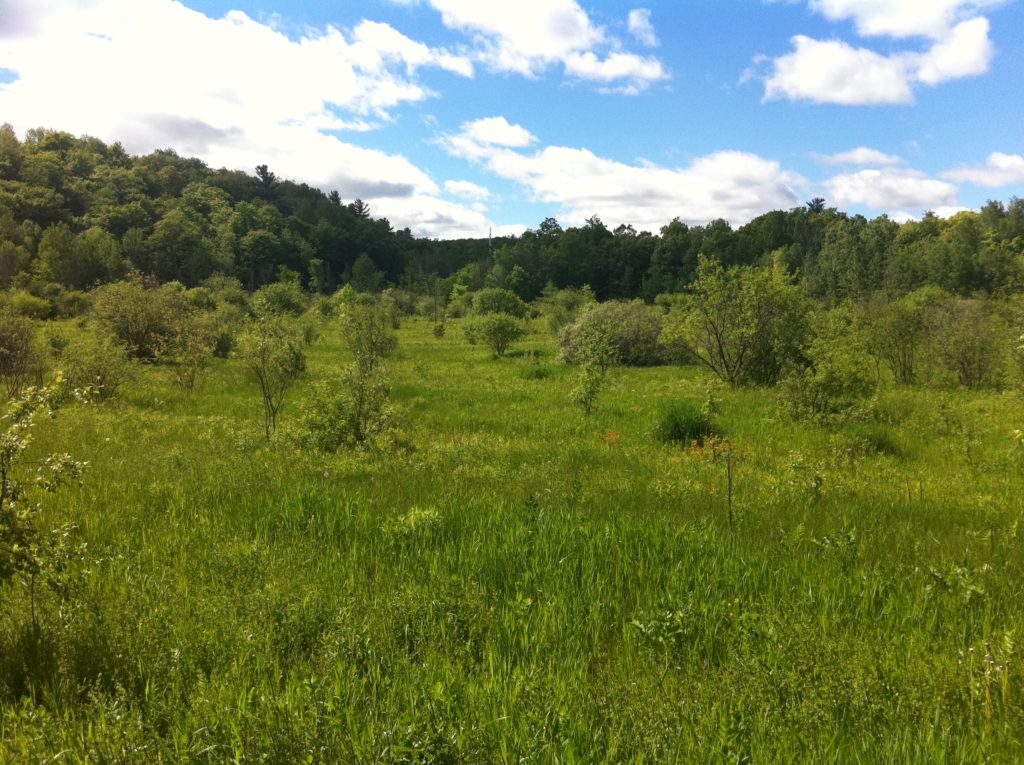
Just look at this part of the meadow, where the buttercups seem to float like stars:
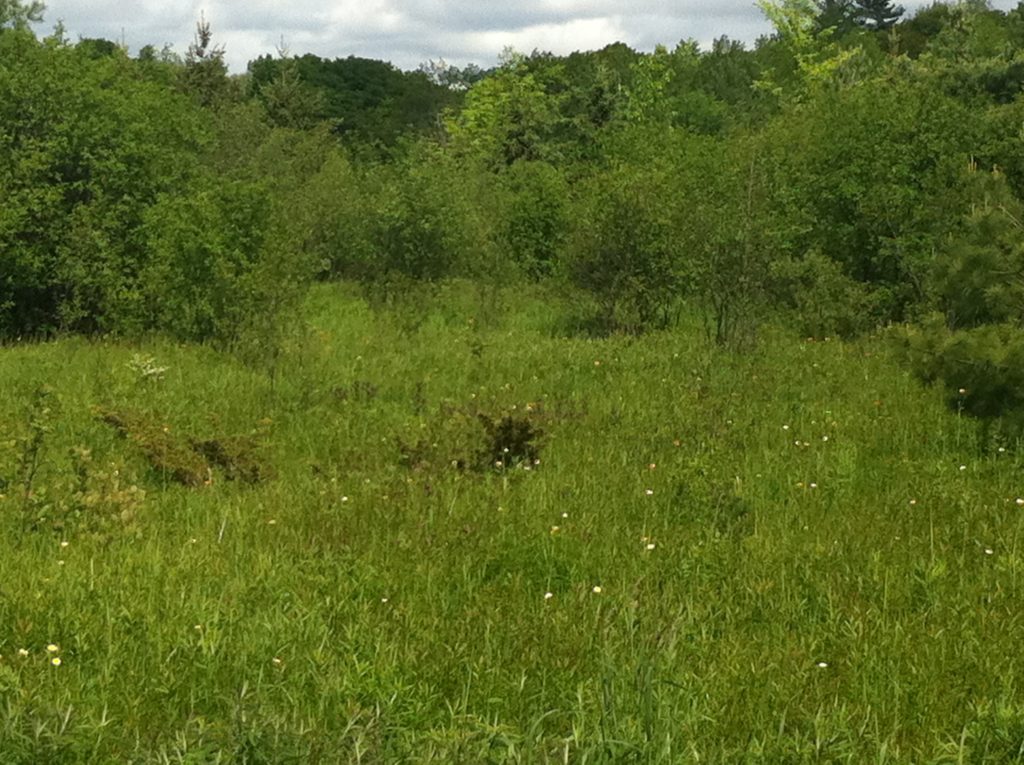
And this particular spot, where the path through the meadow re-enters the forest again. I think I have photographed this view every year since I moved to Gatineau; and I think I will never tire of it. Even though this is the angle that shows where I’ve been and not where I’m going, still I like to imagine this view is of a path to a kind of wonderland, full of discovery and welcome.
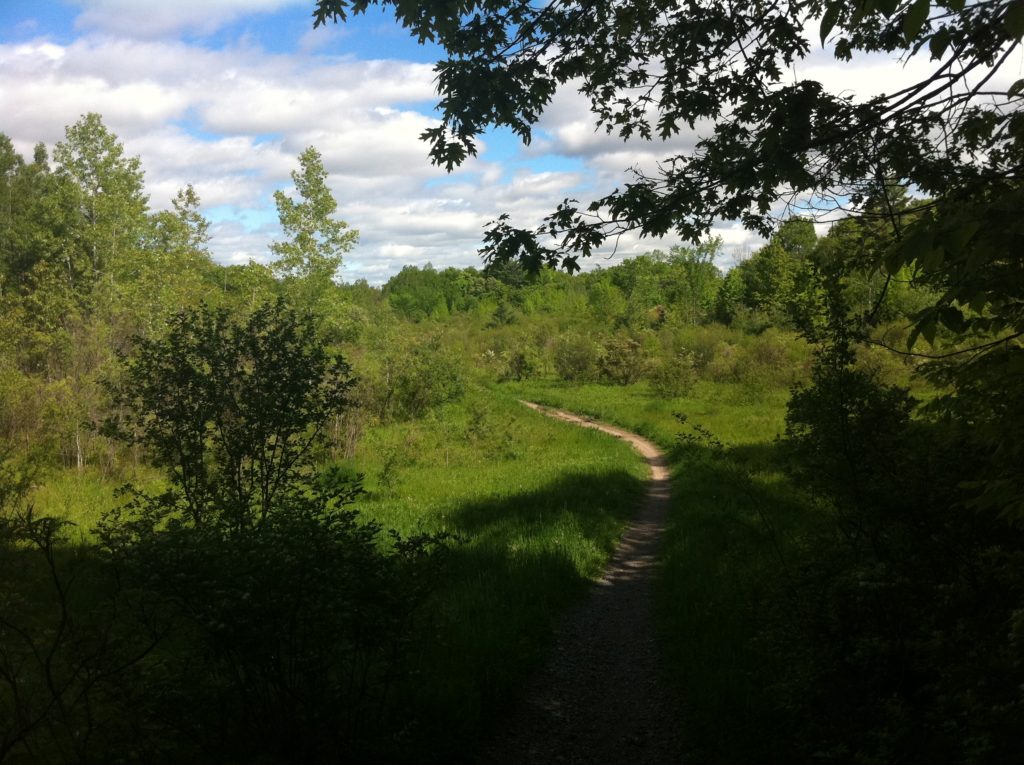
From here my usual route takes me through the forest, past several more landmarks that I am fond of: swamps, ancient hollow trees, forks in the road, and the like. Today I took a side-spur that led to the Gatineau Hills parkway, a road I have to share with cars. I decided to take the parkway today just to cut down my hiking time (I want to get back to writing, after all), but perhaps because of this decision I found that I noticed the cars in a way I normally don’t. In my neighbourhood in the city, it’s easy to ignore the cars; they’re everywhere and the infrastructure is build to serve them and so they look like they belong. In the forest, they look like an imposition, an invasion. More than what they look like– what they sound and smell like feels invasive. I come into the forest for peace and contemplation; if I want the sounds of civilization, I can go to the downtown core. Well, this park belongs to all Canadians, not only to me, so of course I can’t lobby the authorities to ban cars in the park. But next time, I will take the trail that keeps me as far from the road as possible.
So, after about an hour and a half, I arrive at Pink Lake:
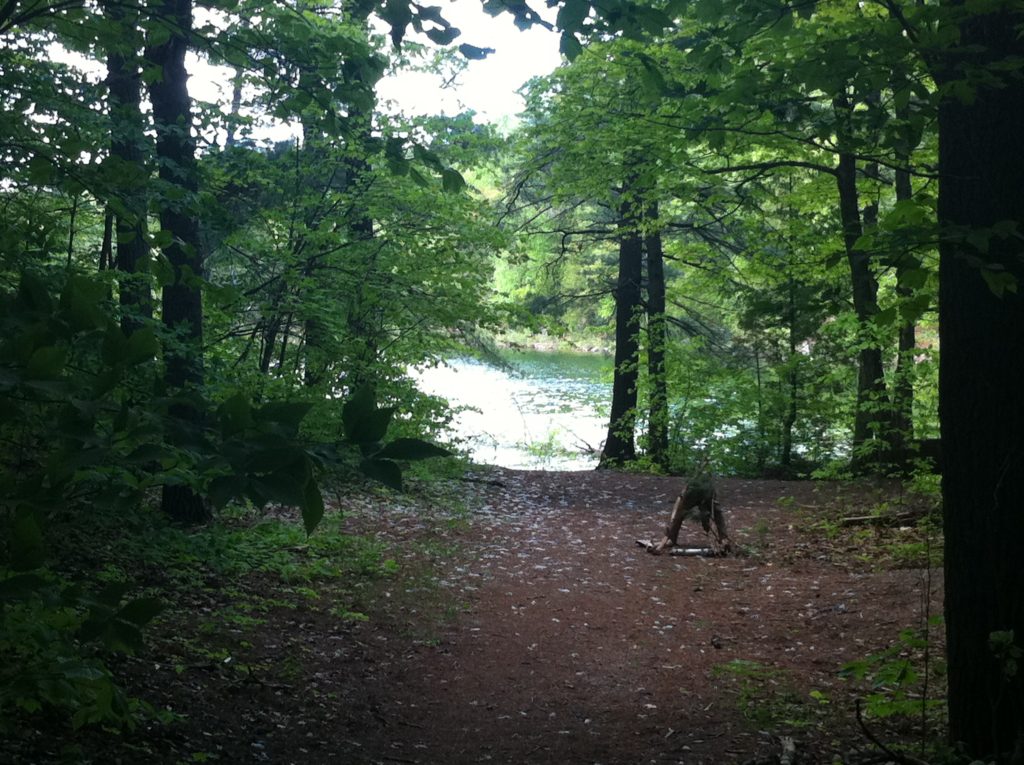
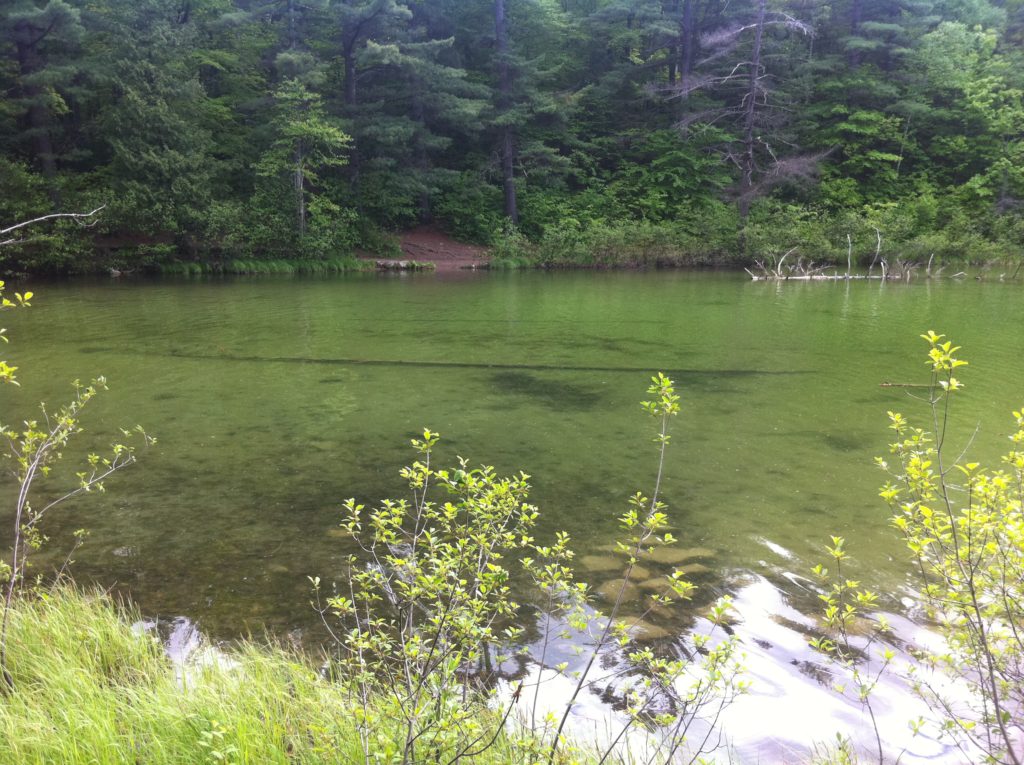
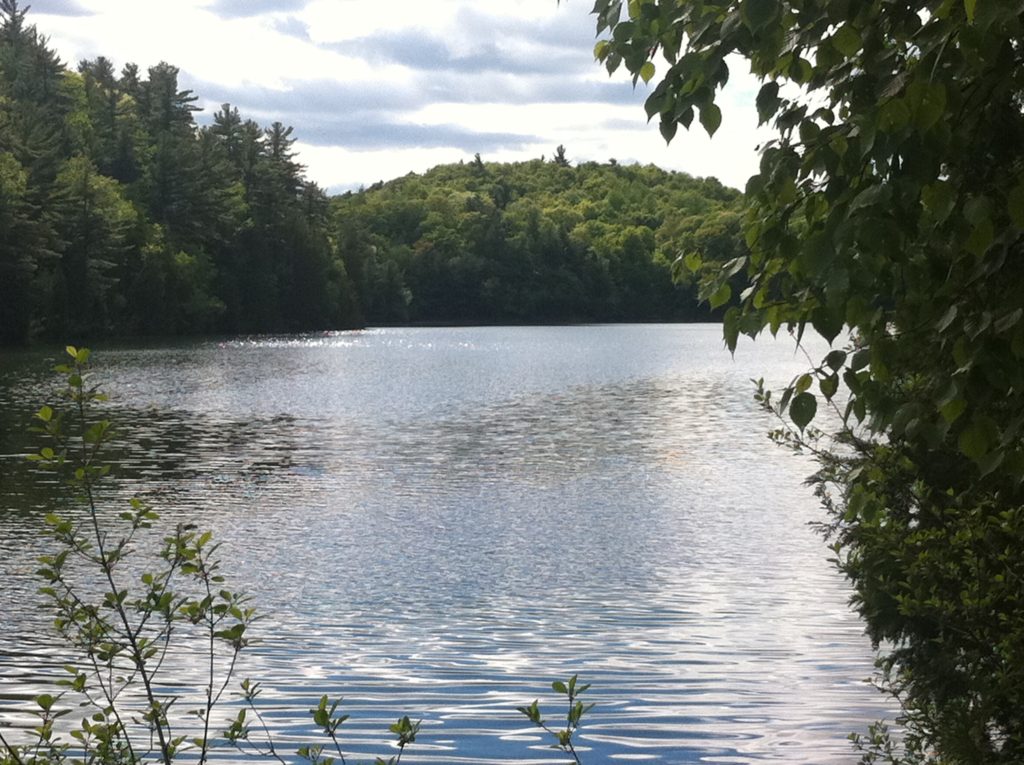
…where I often stay for an hour or more, contemplating the waters, and the life all around. It is one of the few places in the world where I feel at home, safe, welcome, and at peace; it is one of the places where I feel as if the land knows me. This feeling is enriched as much by my knowledge of the science of ecology, as by the association in my mind with the fairy lakes and otherworldly waters in the myths of my Celtic ancestors.
Today, I didn’t stay long, because it’s a Saturday and that means the lake is crowded with tourists. Again, I don’t begrudge their presence: this lake belongs to them too. But today I was reminded of why the ideas for my book on Civilization were born along these shores. And as I meditated on the snippets of their conversations that I could overhear, I was also reminded of an unquiet thought which occurred to me here while I was still researching that book.
Explaining it will require a little bit of philosophical history.
Aldo Leopold proclaimed in 1949 that humanity had to change “the role of Homo sapiens from conquerer of the land to plain member and citizen of it”. Charles Reich declared in 1970 that “There is a revolution coming” and that this revolution would involve the “recovery” and “greening” of first the individual self, and then the body politic of America. Arne Naess declared in 1986 that the ultimate norm of deep ecology was “Self-realization!”; that the biosphere of the earth is a kind of expanded self; the realization of which is both a moral postulate in its own right, and also the basic premise to support the argument that the industrial destruction of the environment must end. In 1990 Karen J. Warren and Vandana Shiva taught that the destruction of the environment is a feminist issue: the oppression of women and the domination of the environment follows the same logical structure and the same substantive value system. These were the bold and forthright ideas in the air when I encountered the green movement, and the pagan community, in the 1990’s. They were serious, action-oriented, pervasive, and even optimistic, although the latter quality was perhaps not obvious at first. They were the ideas that configured the vocabulary of most spiritual people I knew back then; and most of them felt their sense of one-ness with the Earth so deeply and profoundly, that they were convinced “the greening of the self”, and then of the nation, was inevitable.
It was a different time.
So, it’s been nearly seventy years since the first proclamation of “the greening of the self” (well, according to that little list.) And yet all the major life-signs of planetary biosphere health continue to decline. (I direct your attention to the most recent IPCC report, if you are curious.) It is not that those streams of thought lacked logical coherence or explanatory power. It is not that they couldn’t be translated into political action or spiritual inspiration. Nevertheless, the practical fact on the ground right now is that the greening of the self, which these philosophies predicted and demanded, has not occurred. It has, perhaps, occurred among people like myself who are already disposed to it (and I am no exemplar: my eco-footprint is smaller than that of my neighbours, but not by much.) It has certainly not occurred among the majority of politicians and industrialists and other wealthy and powerful parties who are in any kind of position to do anything on a global scale to halt the degradation of the planet’s biosphere. And it has definitely not occurred among a majority of the world’s middle-class and working-class consumers and voters. The failure of this prophesy is perhaps best exemplified with President Trump’s decision to withdraw from the Paris Accord. But it’s been growing on my mind for at least a year, maybe more.
Here, then, is a question: what can be said to persuade people who have not felt the greening of the self– who will perhaps never feel it– that the earth should be protected from climate change and ecological destruction? What can be said to people who will never feel for the land the way, for example, I feel for everything along the path from my house to Pink Lake? What can be said to people who believe, following the logic of a different spiritual path, that they don’t have to care about climate change and global warming because they expect to be saved by God?
Well, that very question is likely to be the topic of my next nonfiction book. But in the meanwhile, I invite your comments.
